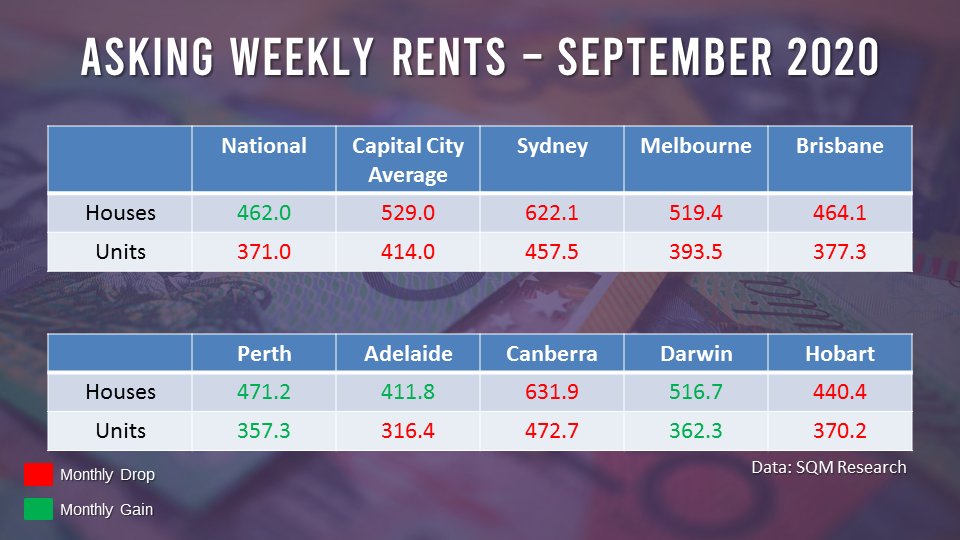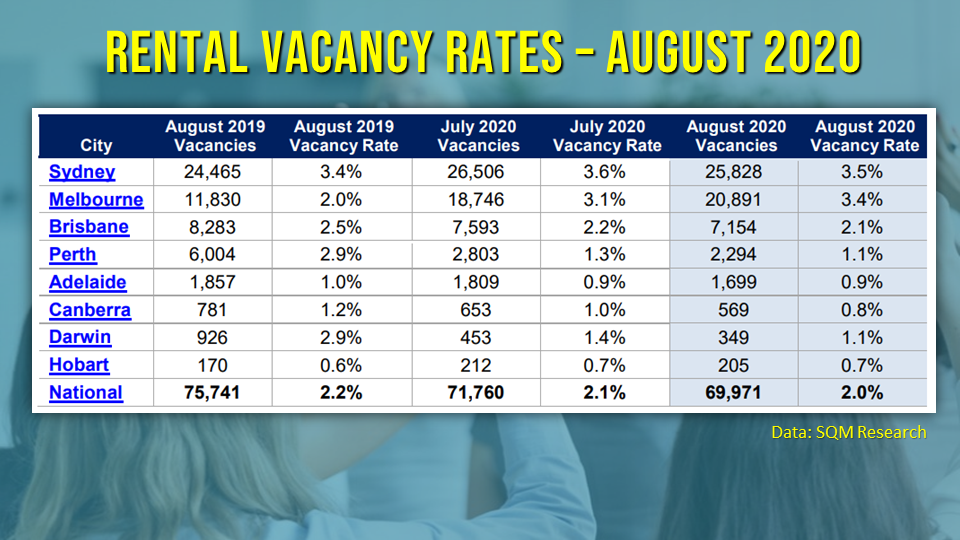Rents across most capital cities continued to decline despite the tightening rental market, according to SQM Research.
Asking rents in capital cities, on average, declined by 1.1% for houses and 0.7% for units. Hobart hit the steepest decline in rent for units at 4.3% while Sydney recorded the most substantial drop for houses at 1.7%. Only Perth and Darwin reported gains in both house and unit rents.
"Sydney and Melbourne rents continue to fall, providing leasing opportunities for tenants who have chosen to stay in town," said Louis Christopher, managing director at SQM Research.
The table below shows the weekly rents across capital cities for the week ending 12 September:

The decline in rents came off the back of shrinking vacancies. The national vacancy rate decreased to 2% in August, down from 2.1% in the previous month and 2.2% in the same month last year.
Of all capital cities, only Melbourne reported a higher vacancy rate in August, from 3.1% to 3.4%. This could be due to the stage four lockdown in Victoria, Christopher said.
“There are now an extra 2,145 vacant properties in Melbourne as the stage four lockdown continues,” he said.
Of all central business districts (CBD), Sydney CBD registered the highest vacancy rate at 12.9%. This, however, was a decline from the all-time high of 16.2% Sydney CBD recorded in May. Melbourne CBD, on the other hand, posted its highest vacancy rate on record at 10%.
This was the opposite of what was happening in most regional locations where vacancy rates continue to shrink. Christopher said this further highlights the ongoing shift away from inner-suburban living into areas offering more room and distancing for homeowners.
"The shift towards regional living continues at pace, largely at the expense of higher inner-city rental vacancy rates. I suspect there will have to be a high point in this move soon. However, I also suspect there will be a degree of permanency with the massive population shift," he said.
